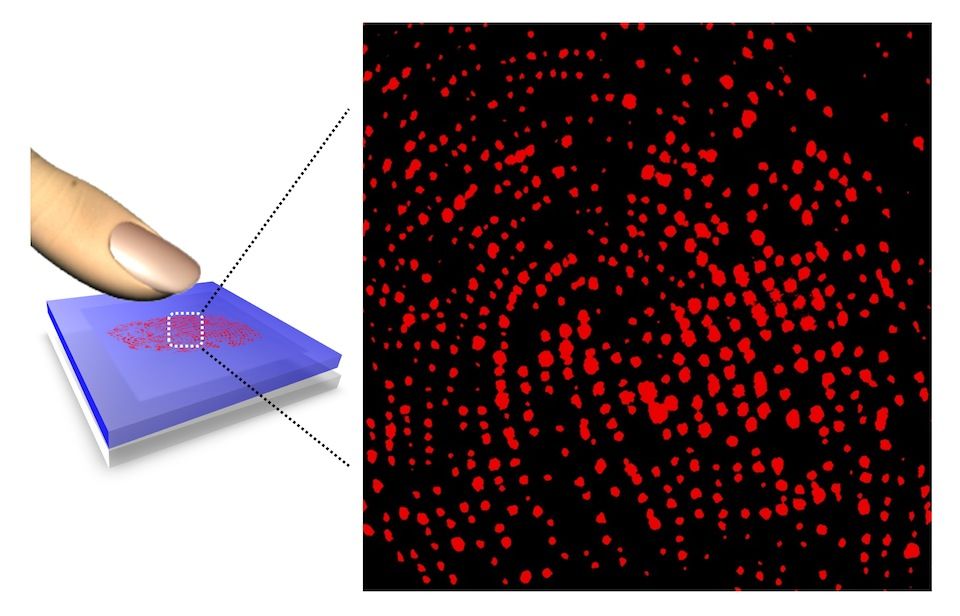Sweaty Hands? New Fingerprinting Method Takes Pore Prints

Criminals might not get away so easily, thanks to a new fingerprinting method that may be faster and more reliable than traditional methods, researchers say.
The method images the sweat pores in a human hand using a polymer that glows fluorescent and changes color when it comes in contact with tiny droplets of water. Only a small fraction of the fingerprint is needed to identify an individual, according to the new study.
"The sensor technology developed in this study has the potential of serving as a new method for fingerprint analysis and for the clinical diagnosis of malfunctioning sweat pores," the researchers wrote in the study, detailed today (April 29) in the journal Nature Communications. [5 Crazy Technologies That Are Revolutionizing Biotech]
The idea of using sweat pores for fingerprinting isn't new, but this is the first time that fast, reliable and cheap methods have been available.
A team led by Jong-Man Kim, a chemical engineer at Hanyang University in South Korea, developed a new fingerprinting method that uses a simple color-changing polymer that can be deposited using an ink-jet printer. When a fingertip is pressed against it, the polymer changes color from blue to red and glows in the places where it comes into contact with sweat, producing a dotted pattern that constitutes a unique fingerprint.
Traditional fingerprinting, which captures the characteristic ridge patterns on the fingertip, requires a large area to produce a reliable print and is prone to error. In contrast, the sweat-pore method requires only a small fraction of the fingertip to match it to its owner and is more reliable, researchers said.
The new method could also be used to diagnose sweat-pore disorders, because it can distinguish functioning pores from nonfunctioning ones.
Sign up for the Live Science daily newsletter now
Get the world’s most fascinating discoveries delivered straight to your inbox.
Follow Tanya Lewis on Twitter and Google+. Follow us @livescience, Facebook & Google+. Original article on Live Science.











